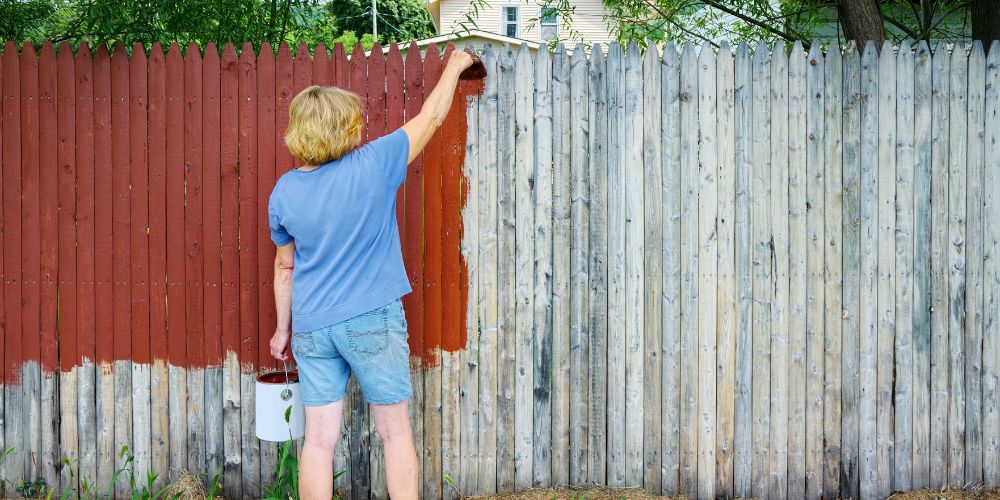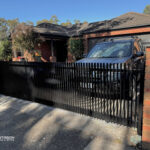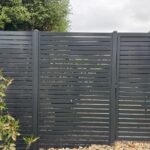
When faced with a damaged or aging fence, homeowners often find themselves grappling with an important decision: Should the fences be repaired or replaced? This question requires careful consideration, taking into account factors such as the extent of the damage, the age of the fences and the overall cost implications. While repairing a fence may seem like a cost-effective solution in the short term, there are situations where replacing the fences can provide long-term benefits.
Signs Your Fences Requires Attention
A well-installed fence typically doesn’t collapse suddenly unless there is direct damage caused by a severe storm or accidental impact. However, over time, wear and tear can develop, leading to various visual signs indicating that your fence needs attention. Some common signs to watch out for include:
- Sinking, sagging, bending, or warping
If you notice that your fence is no longer level or has started to bend or warp, it may be a sign of structural issues.
- Leaning posts
Posts that are leaning to one side can compromise the stability of your fence and may require repair or reinforcement.
- Cracks, holes, dents and bumps
Damage to the surface of your fence, such as cracks, holes, dents, or bumps, can weaken its integrity and affect its appearance.
- Discoloration
Fading or discoloration of your fence material, whether it’s wood, vinyl, or metal, can indicate sun damage or the need for a fresh coat of paint or stain.
- Peeling paint or stain
If the paint or stain on your fence is peeling or flaking, it may be time for a new finish to protect the underlying material.
- Splintered wood or signs of dry rot
In the case of wooden fences, splintered wood or signs of dry rot, such as brittle or decaying sections, require immediate attention to prevent further deterioration.
- Mold, mildew, or visible fungus
The presence of mold, mildew, or visible fungus on your fence can be a sign of excess moisture and may require cleaning and treatment.
- Signs of termites or other insects
If you observe signs of termite infestation or other insect damage, it’s essential to address the issue promptly to prevent further harm to your fence.
- Rust and corrosion
For metal fences, rust and corrosion can weaken the structure and compromise its durability. Regular maintenance and rust treatment are necessary to prevent further deterioration.
- Loose panel clips, fencing staples, or other fasteners
Check for loose panel clips, fencing staples, or other fasteners that may have come loose over time. These should be tightened or replaced as needed to maintain the fence’s stability.
By regularly inspecting your fence for these signs and addressing any issues promptly, you can ensure the longevity, safety and visual appeal of your fencing investment.
Determining When to Repair Your Fences

Fence damage can generally be categorized into two types: acute and chronic. Acute damage occurs suddenly and is usually a one-time event, such as a tree branch falling on the fence. Chronic damage, on the other hand, is ongoing and often stems from factors like termites or wood rot.
When dealing with minor acute damage, repairs are typically feasible, although they may only offer a temporary solution. However, addressing chronic damage can be more challenging as it requires fixing the underlying issue causing the damage.
Common Issues with Wood Fences
Natural wood is susceptible to various environmental factors, including moisture, insects, UV rays and weather conditions. Some common issues you may encounter include:
- Discoloration or peeling paint/stain
- Minor cracks, holes, or splinters
- Mold and mildew
- Warping
Superficial damage to wooden fences can often be restored by filling minor cracks and holes with wood filler or putty and applying a fresh coat of paint or stain. However, addressing underlying issues such as moisture or termite infestations is crucial for meaningful repairs.
Common Issues with Vinyl Fences
Vinyl fences are known for their durability, but cracking can still occur over time. While minor holes and cracks can be temporarily fixed using a vinyl fence repair kit, it’s often more effective to replace the damaged picket or panel.
Common Issues with Metal Fences
Metal fences, including aluminum, chain link and wrought iron, can experience similar issues, such as:
- Sticky or sagging gates
- Leaning or uprooted posts
- Bent or dented rails
- Rust and corrosion
Minor repairs for metal fences may involve replacing damaged gate hinges, addressing mild rust and corrosion, or straightening slightly bent rails. In some cases, leaning posts can be reset in concrete or a sagging gate can be DIY-fixed if the damage is minimal.
Signs That Your Fences Needs Replacing

When it comes to determining whether your fence needs to be replaced, significant damage usually indicates the need for a replacement. However, it’s not always necessary to replace the entire fence. In many cases, you can replace individual posts, pickets, or panels. Keep in mind that matching the color of the replacement part may be challenging and you may need to paint the fence to achieve a uniform appearance.
Here are several indicators that it might be time to replace your fence or a portion of it:
Rotting
If a small portion of the fence is affected by rot, you can cut it off to prevent further spread. However, if more than 30% of a post or panel is rotten, it’s best to replace the affected area to prevent structural issues.
Leaning
A leaning fence is often a sign of damaged or improperly installed fence posts. If multiple posts are leaning, it may be necessary to replace the entire fence. However, if only a few posts are affected, you can remove the old posts and install new ones. Temporary solutions like fence post repair kits with braces should be used sparingly.
Missing or Split Fence Boards
As long as the fence posts are in good condition, you can replace a few missing or split fence boards without replacing the entire fence. However, if both the posts and boards have issues, a full replacement may be more appropriate.
Insect Infestation
If a wood-eating insect infestation has caused damage to more than 30% of a post, picket, or board, it is often necessary to exterminate the infestation and replace the affected area. Wood that has been significantly damaged by insects is typically irreparable.
Non-Functional Privacy Fence
If your privacy fence fails to provide the intended level of privacy, it’s advisable to replace it with a fence that offers better coverage and blocks the view effectively.
Age
Consider the age of your fence when deciding between repair and replacement. If a section of the fence is deteriorating due to age, it’s important to remember that the rest of the fence’s materials are also old and likely to require repairs soon. The 20% rule is often used by professionals, suggesting that if 20% or more of an aging fence needs repair, it’s more cost-effective to replace the entire fence rather than continuously repairing different sections.
Neighboring Fence Ownership
If the ownership of the fence is unclear and it is determined that the fence belongs to your neighbor, they may refuse to repair or replace it. In such cases, you might need to build your own replacement fence on your property if desired and ensure clear ownership.
Desire to Upgrade Fence Material
If you initially installed a fence on a budget but now wish to upgrade to a higher-quality material, a fence replacement provides an opportunity to do so.
By considering these factors, you can make an informed decision on whether to repair or replace your fence based on its condition, functionality and your long-term cost considerations.
Cost of Repairing vs. Replacing Fences

The cost of repairing versus replacing a fence can vary depending on various factors such as the extent of the damage, the type of material used and the local labor and material costs. Here are some general cost considerations:
Repairing a Fence
- The cost of fence repairs typically ranges between $10 and $30 per linear foot.
- Minor repairs, such as replacing a few pickets or repairing a small section, can cost around $300 to $900.
- However, if your fence requires frequent repairs or extensive damage is present, the repair costs can add up over time.
Replacing a Fence
- The cost of a new fence installation can range from $6 to $50 per linear foot, depending on factors such as the material, style and site conditions.
- On average, a new fence installation can cost between $1,750 and $4,430.
- If you are replacing an existing fence, there may be additional costs involved, such as fence removal, which can range up to $5 per linear foot if hiring a professional.
When deciding between repairing and replacing, it’s important to consider the overall condition of the fence, the extent of the damage and the long-term cost implications. If your fence is old, has widespread damage or requires frequent repairs, it may be more cost-effective to replace the entire fences rather than continuously investing in repairs.
Additionally, keep in mind that these cost estimates are general and can vary significantly depending on your location, the specific materials used and the complexity of the job. It’s always recommended to get multiple quotes from reputable contractors to have a better understanding of the costs associated with repairing or replacing your fence.
Conclusion
The decision to repair or replace a fence depends on several factors, including the extent of the damage, the age of the fences, the cost of repairs versus replacement and your long-term goals. Minor repairs can be a cost-effective solution for isolated issues, but if the fence has extensive damage, frequent repairs, or is reaching the end of its lifespan, it may be more practical and cost-effective to opt for a full replacement. It’s recommended to assess the overall condition of the fence, consider the long-term costs and consult with professionals to make an informed decision that aligns with your needs and budget.




